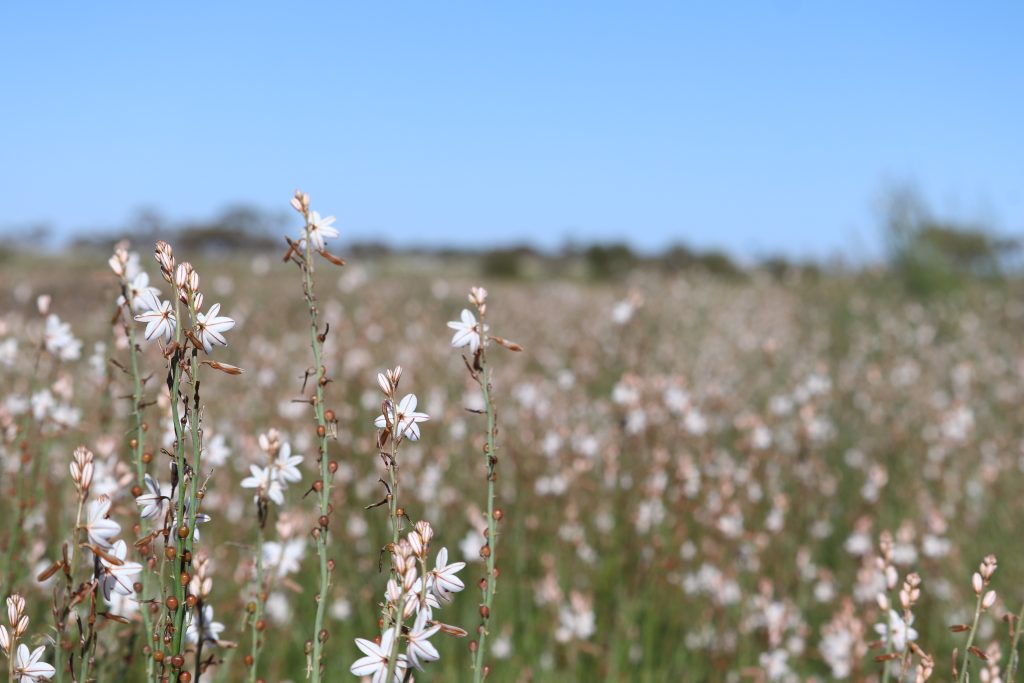GOLDFIELDS NULLARBOR RANGELANDS BIOSECURITY ASSOCIATION
ONION WEED
PEELING BACK THE LAYERS OF NULLARBOR ONION WEED

This project was made possible by the State NRM Grant “Peeling back the layers of Onion Weed”. The objective of the project is for GNRBA to measure the spread of Onion Weed through monitoring sites, to build awareness and knowledge through field walks and existing GNRBA communication networks, and research to ascertain a possible measure of control of the weed.
For more information please contact GNRBA Executive Officer, Amanda Day by email: CEO@gnrba.com.au
ABOUT ONION WEED
Onion weed (Asphodelus fistulosus), is an annual or biennial herb that grows in alkaline sandy or clay soils. It is often found on sandy coastal sites, is drought– hardy once established and capable of growing and spreading rapidly. Flowers are monoecious (have both male and female parts), are insect pollinated and produce prolific seed.
In WA, Onionweed is an invasive plant species. A Declared species in some states of Australia due to it not being controlled in its early stages of spread. Onion weed is slowly creeping across the Nullarbor region of the Southern Rangelands (SR) of Western Australia uninhibited. This plant can invade disturbed land such as roadsides, coasts, dongas, established fertile areas, degraded pastures and neglected areas. Weed seeds travel vast distances carried by wind, waterways, native and domestic animals, passing vehicles and train carriages.
Areas of this weed have become so vast that chemical control is not an effective or efficient control option without impacting native, and rare grasses. Where onion weed grows, plants cease to flourish in a drought, and after extensive rain appear to be crowded out. Therefore, native flora biodiversity conservation is impacted, and as the infestation increases grows, there appears to be an impact on the fragile ecosystem of the Nullarbor with limited ability for natural native flora recovery.
Onion weed is unpalatable and of no nutritional value to livestock or native mammals. Therefore, the growing spread of onion weed is preventing the establishment and growth of grasses for livestock production, as well as limiting native flora diversity and the ability to sustainably manage the land.

GNRBA had undergone extensive trials, monitoring, engaging pastoralist assistance to study and manage this invasive species over many years. The work in 2023-2024 has been instrumental in establishing infestation area, the use of drone mapping, the identification of sudden spread under changing climatic conditions as well as working with RNRM, CSIRO and speaking to government agencies as to the likelihood of there trialing a biological control on this fragile area.
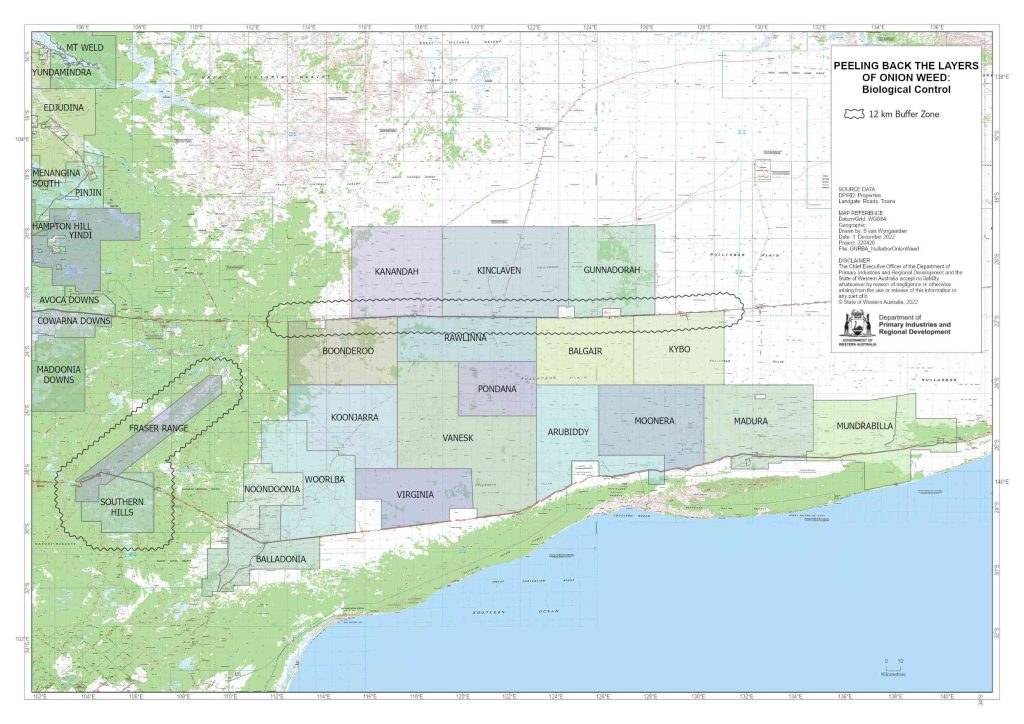
Onion weed map with known sites as of 31/10/2022. These sites were close to the Trans Australia Railway line but extended in patches and locations approximately 12 – 15km north and south of the railway for as far west as the Kanandah western boundary.
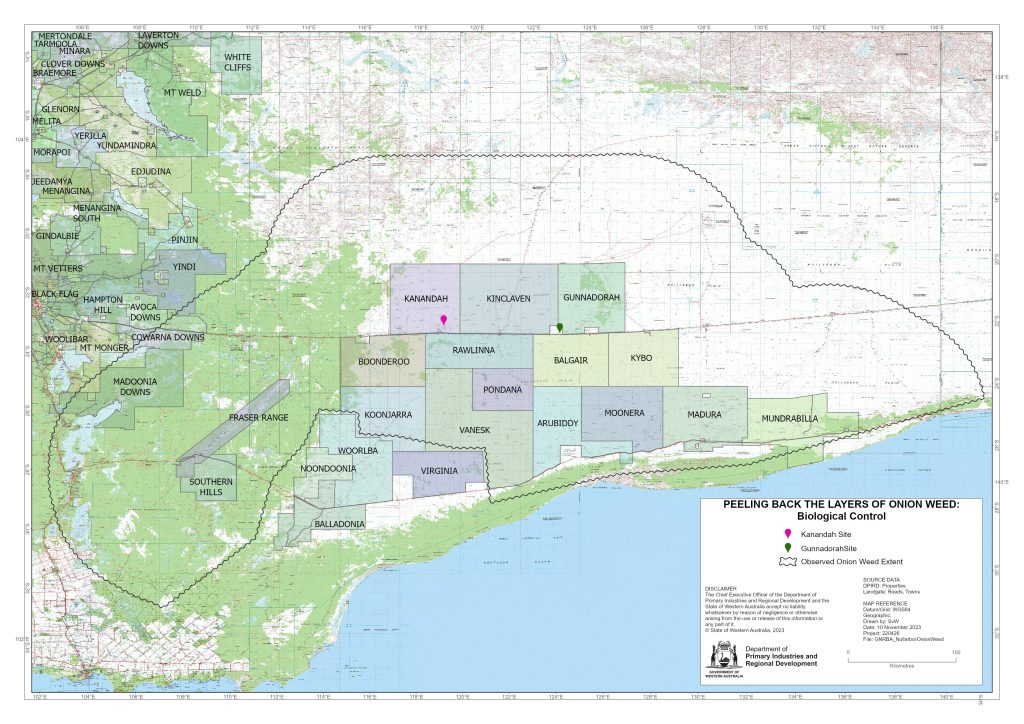
In 2023 the new map reveals a different story with established infestation on Fraser Range and Southern Hills Stations then largely identified as per the map outline.
This was a distribution area increased during a six-year drought.
The map reflects an area established in the Fraser Range/ Southern Hills locations.
With the State NRM GNRBA Grant “Peeling back the layers of Onion Weed”, GNRBA worked with CSIRO to collect onion weed plant samples and seed in December 2022. These samples of the plant were sent for DNA testing to CSIRO WA (Mariana Campos) in December.
The CSIRO team in Montpellier, France, was an option for biological control agents and to ensure that the best agent can be selected, they planned to run a preliminary study on the genetic makeup of onion weed in the native region and in Australia.
They had a small grant to study about three populations from Western Australia – this includes the DNA extraction, sequencing, and analysis, but not the field work.
CSIRO, Mariana Campos, her interest in the spread and impacts of Asphodelus fistulosus, with the ability to take DNA testing and plant propagation to CSIRO France was a major contribution at the inception of the grant. Unfortunately, this
work was held back by CSIRO due to funding and did not eventuate after the cost of collecting samples by GNRBA.
Further to the collection of samples GNRBA and State NRM developed a workplan to undertake drone imaging and mapping in 2023-2025.
• Utilising pastoral managers to operate drones and software
• Purchase of Drone by GNRBA and train a GNRBA contractor
• Undertaking an Environmental Impact Review with an Environmental Consultant
• Further research into onion weed (Asphodelus fistulosus) management, distribution, impact on native species and environment, movement with wind direction, soil type, reaction to drought/ rainfall/ grazing by a GNRBA researcher
• Notification in other areas onion weed (Asphodelus fistulosus) establishment i.e. Yerilla Station Leonora.
• Three field days as a general membership then at Rawlinna for Nullarbor pastoralists
• Several review trips onto the Nullarbor and Eyre Highway
Details of work undertaken 2022 - 2024
A. December 2022 Jennifer Jackson – Environmental Scientist was contracted to travel with GNRBA CEO Amanda Day to assess the extent and impact of onion weed on the unique and fragile Nullarbor ecosystem.
B. May 2023 CEO Review of onion weed Trans Line. Week long activity. Similar infestation levels.
C. April 2023 GNRBA Information Day for Pastoralists and Stakeholders including onion weed updates.

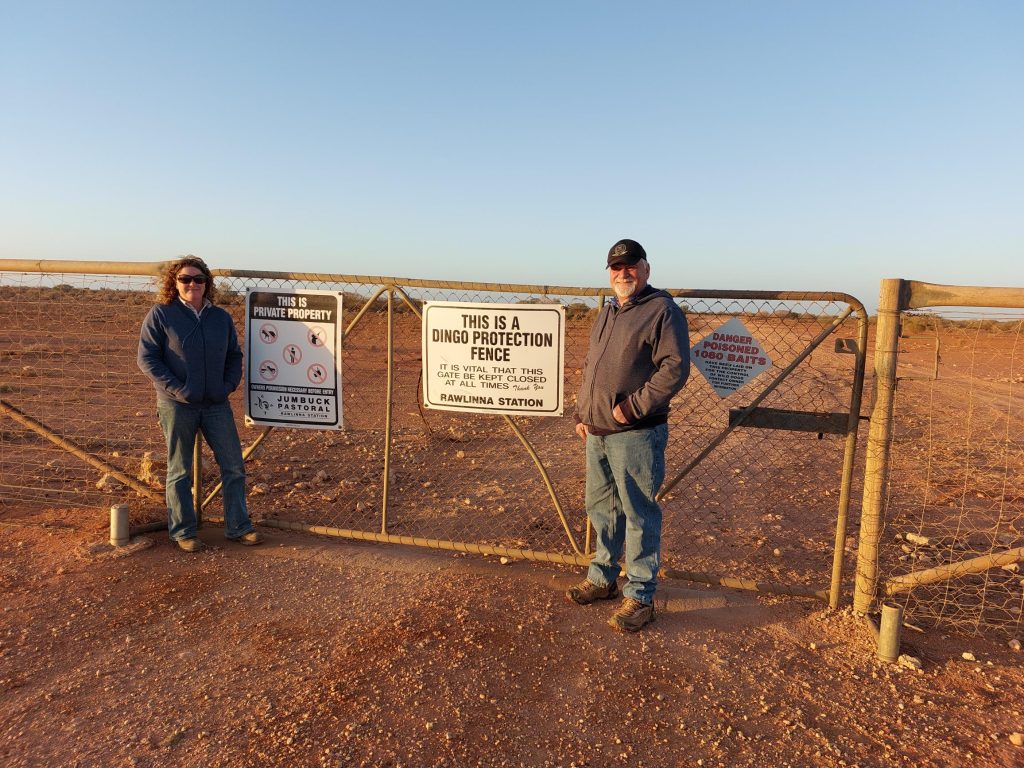
D. May 2023 Sarah Jeffery and Steve Ewings RNRM travelled with Amanda Day GNRBA to assess any changes alongside drone footage of the infestations for comparison in 2024 May. Steve Ewings trained three pastoralists from Gunnadorah, Rawlinna and Kinclaven Stations in their own drone usage and mapping. These three individuals were able to supply drone maps to GNRBA for further planning and mapping.
E June 2023 GNRBA CEO Eyre Highway trip to access onion weed. No sign of plants along highway or on station Balladonia to Ciaguna. Isolated plants at highway through to Mundrabilla where there was a slightly larger infestation
roadside. Pastoralists noted onion weed extending further south through Virginia, Arubiddy, Rawlinna, Madura Plains and Mundrabilla.
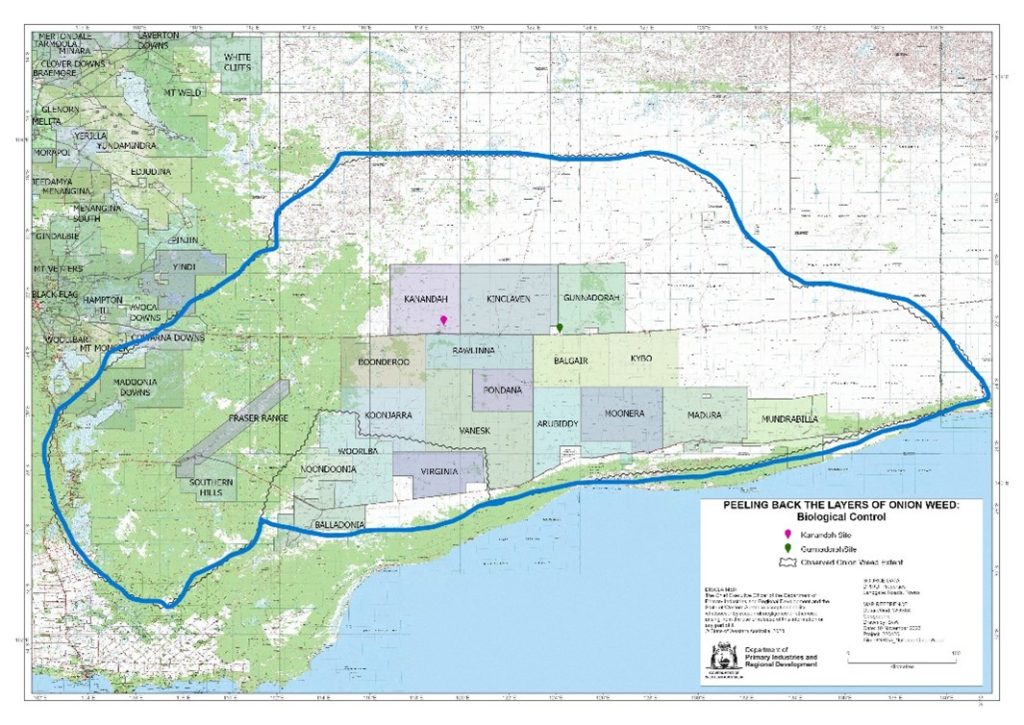
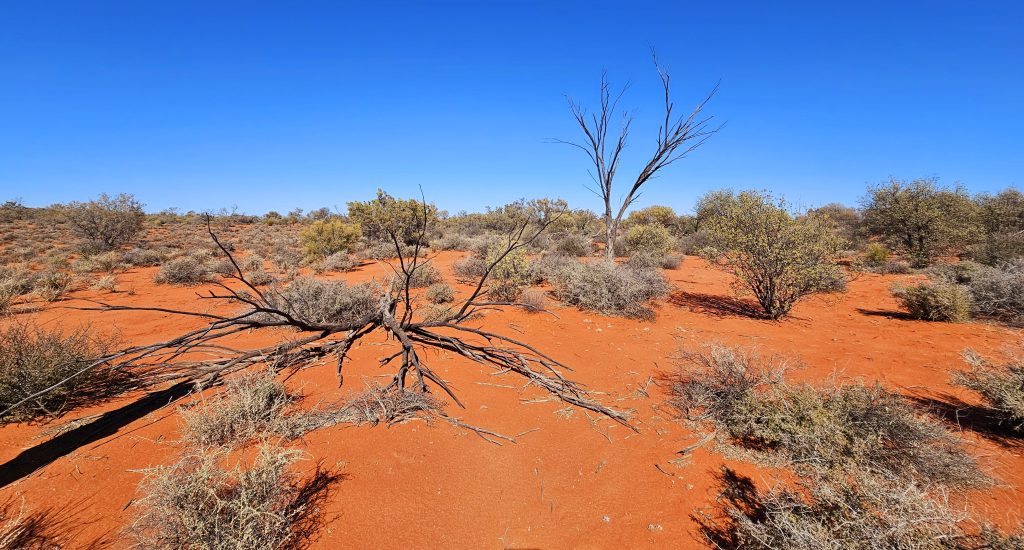
G. July 2023 – Field Walks at Yerilla Station and goldfields exposed onion weed in small infestations mainly main roadside. They were not as abundant as Nullarbor infestations.
H. November 2023 – GNRBA AGM and Mt Vetters Field Day 2-3 November 2023. The project and onion weed distribution, and work was a feature of the event and discussed in projects.
I. February – August 2024 Once in a 100 year rainfall event inundated the WA Nullarbor region dumping large rainfall of over 380mm within a few days.
Dongas and roads were filled to capacity, and movement of vehicles and trains stopped. Only in September 2024 is it safe to travel with care and onion weed able to be monitored again.
J. 27 August 2024 Eyre Highway trip Norseman to Ciaguna exposed a sudden infestation of onion weed from Balladonia Roadhouse to Ciaguna. Onion weed observed at Balladonia Homestead and 500m north and south of the highway along the 90 Mile Straight, amongst dense spear grass and native plants to one metre tall. Flowering and setting seed.

K. Map as above August 2024
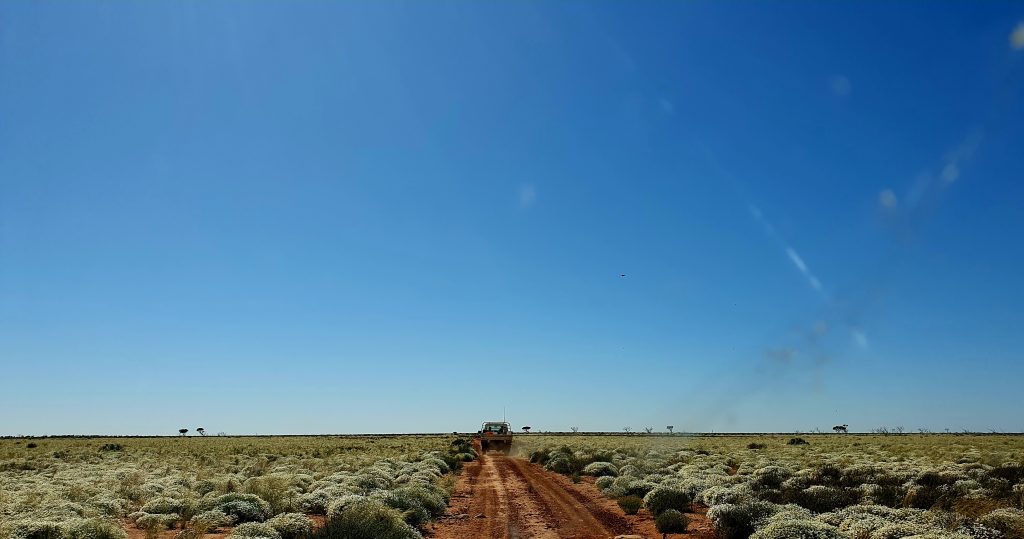
L. 2-5 September 2024 GNRBA CEO, drone operator GNRBA LPMT Neil White, Sarah Jeffery RNRM and Julianne Hill GGA and FDF were able to access some of the onion weed sites flown in May 2023. Sites were either bare after flood inundation or well covered with onion weed flowering and setting seed.
Plants were competing with native grasses and blue/ salt bush and annual herbage. Drone sites were more densely covered.
Conclusion and Summary
Since June 30, 2022, there have been extremely dry conditions on the Trans Line area from Kanandah Station to the border. In February 2024 intense rainfall of over 350mm per occasion occurred west of and south of the identified onion weed corridor. This has been of impact to the onion weed sites with prevailing winds, intense flooding, donga damage and spread of the plants into all Trans Line and Eyre Onion weed continued to flourish even with the dry conditions when there was little competition but now it is overtaking native species in its worst locations.
The pastoralist at Gunnadorah Station continued to spray with chemical and non-chemical (salt water) however the actives in that chemical created impact to native vegetation. Much manual removal of the weed has occurred at Gunnadorah to stem the spread. This is effective but time consuming. It could not occur quickly enough to prevent spread of the seed on the wind. The extent of the weed to up to 100km north of the Trans Access Line eliminated effective control measures.
As per the details of the grant GNRBA has numerous learnings, established stakeholder contact, raised awareness and national exposure through the grants ability to promote the effects of (Asphodelus fistulosus) on the unique and fragile ecosystem of the WA section of the Nullarbor Plain and Western Woodlands.
Newspaper Articles about the Onion Weed Project
